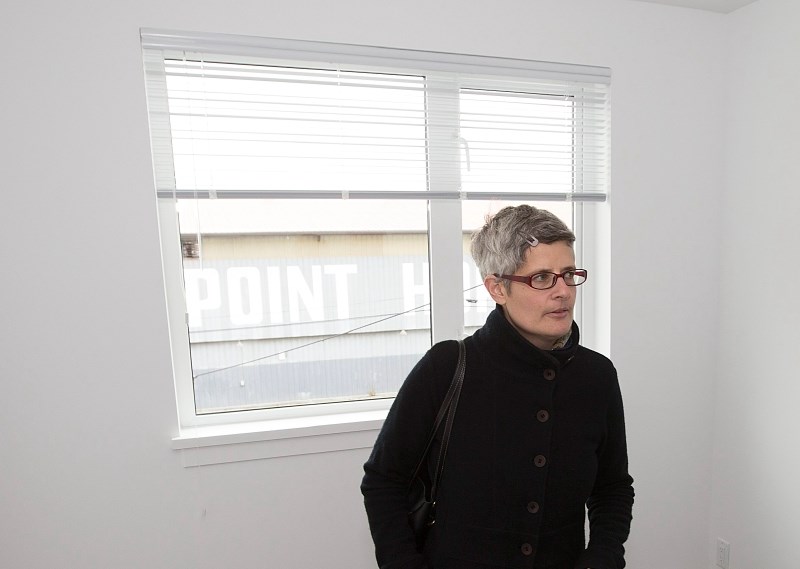Victoria Mayor Lisa Helps welcomed the federal government’s 10-year, $40 billion national housing strategy Wednesday as a needed return to a task it abandoned decades ago.
“The federal government stepped out of housing in 1993 and this very firmly puts the federal government back into housing in an ongoing and systemic way,” Helps said. “It’s a bold and ambitious strategy and it’s going to take partnerships to make it happen.”
The federal Liberals plan to create a new housing benefit to go directly to low-income tenants, spend billions to repair approximately 300,000 existing affordable housing units and to build 100,000 new units as part of its housing strategy, announced in Toronto Wednesday.
But the new housing benefit, which the federal government said could help as many as 300,000 households, won’t kick in until 2021 — long after the next federal election.
Helps said the probable reason why those funds won’t flow for a few years is to get new affordable units built first so subsidies can go to them and not only to those in market-priced rentals.
“Everyone wants everything right away but a long-term strategy can’t achieve results with everything right away. I think building the new units is a priority and then the [housing] benefit can kick in after that,”
The announced $40 billion in spending over the next decade includes almost $10 billion of federal money, repurposes $4.8 billion, and then relies on provinces and territories adding billions in matching funds.
The housing benefit, for example, is supposed to be $4 billion over eight years, but includes $2 billion from provinces and territories.
If any province or territory balks, the benefit won’t flow there.
In Ottawa attending Federation of Canadian Municipalities meetings, Helps said some of her municipal colleagues are concerned that the federal funding is tied to provincial participation.
She doesn’t share those concerns as the B.C. government has already committed to building 110,000 new units over the next 10 years. “I think our province has already made those commitments and that will serve us well in British Columbia.”
Premier John Horgan said the federal announcement ensures that all levels of government are working to increase the supply of affordable housing.
“In order to address affordability we need to bring on more housing and it needs to not just be one-bedroom apartments in the sky. We need to build houses and homes for families,” Horgan said. “That means two- or three-bedroom units, that means building density around transportation corridors.”
The strategy calls for creation of a financing program for housing providers to help them repair aging units and use their assets to leverage additional cash to build new apartments and homes.
Many of the region’s co-op housing units are desperately in need of upgrades and could benefit from the housing repair fund, said Saanich Coun. Judy Brownoff, who sits on the Capital Regional District’s hospitals and housing committee. “We have a number of co-ops in the region that have fallen into disrepair and not enough money has been invested.”
Brownoff is also supportive of the national co-investment fund, which creates incentives for developers to include a certain number of affordable units in new condominium projects.
Dean Fortin, executive director of Pacific Housing, a non-profit subsidized housing provider, called the national housing strategy “a game changer.”
“There’s a big infusion of money that’s going to allow us to build affordable homes for everyday residents,” he said.
Fortin said Pacific Housing receives dozens of calls every day from people facing evictions sparked by renovations or squeezed out of their homes by rent increases. For the month of November in the Capital Region, there were more than 2,100 families and individuals waiting for subsidized housing operated by B.C. Housing.
“There are a lot of people waiting for housing and a lot of people desperate,” Fortin said.



